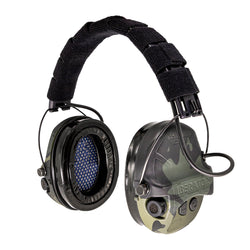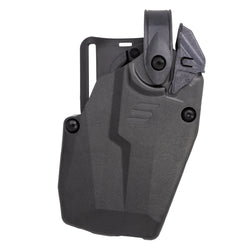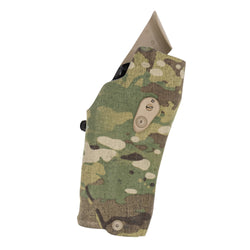It’s quite entertaining to observe the rediscovery and widely heralded declarations of what’s best in the world of ammunition and firearms, again.
In the past couple years, we have seen the pleasant resurrection of the lever-action rifle. Shooters can now have lever guns in a variety of configurations from multiple manufacturers. Old school, tactical, expensive customs, budget-based, you name it, they are out there, and they keep on a ‘coming.
A similar renaissance occurred with 1911 handguns years ago, if you’ll recall. Everyone makes a 1911 these days, which is another good thing.
Double-action revolvers are seeing a pleasing uptick, as well. A new generation of shooters are discovering that the ol’ wheel gun can still get it done, and realizing magazine capacity just might not be as important as the ability to place accurate shots on target with a good bullet from a cartridge of adequate power.
Revitalization is great for the gun and ammo industries, and especially good news for us shooters.
Origins and Purpose of the .40 S&W

Advancements in bullet technology have brought the 9mm to the forefront as a preferred cartridge for law enforcement, and when the FBI proclaimed the nine’s newfound superiority and issued it to its agents, other agencies and departments began to follow suit. With the increase in the popularity of the 9 mm, the previously favored .40 S&W began to be phased out from duty holsters around the country.
The .40 S&W was originally developed 35 years ago to offer increased stopping power over the, wait for it, 9mm! They were looking for something with less recoil than the .45 ACP. It’s a little ironic that the .40 S&W was brought about at the request of the FBI for a better fight-stopping handgun round.
Comparing the .40 S&W and 9mm

My friend and colleague, Jason Mosher, penned “Why America’s Finest Left .40 S&W Behind” here a few weeks back. As always, Jason’s article was well written and well presented. Truth be told, there are a lot of folks who would agree with everything he wrote. Heck, I’ll go ahead and admit he’s dead-on with many of his comments.
Jason correctly details the attributes that have placed the 9mm in the spotlight: advancements in bullet technology, lower recoil, increased magazine capacity, and lower cost.
Recoil and Real-World Perceptions
Jason mentioned the increased recoil of the .40 S&W, and he is correct: it’s a bit snappier than the 9 mm with a Relative Recoil Factor (RFF) of 0.74. By comparison, the RFF of the 9 mm is 0.65 and the .45 ACP is 0.93.
I used a H&K P2000 chambered in .40 S&W for a Gunsite Academy 250 Pistol Class years ago. The instructors, who see all manner of firearms and cartridges, even commented on how much the little pistol bucked. Is it too much for most shooters? I don’t think so.
I carried handguns chambered in .40 S&W for most of my law enforcement career. I would submit that the size of the gun weighs heavily on the felt recoil of pistols. A small pistol in 9mm will emit more perceived recoil than a full-sized gun. While the .40 S&W obviously recoils more, because it’s more powerful, it’s manageable.
Fundamentals Matter More Than Caliber
The perception of recoil seems to be a very personal thing, and it’s not dependent on skill. I’ve seen very experienced shooters politely decline having anything to do with firing a gun they perceive to produce substantial recoil. Others will take said firearms and blast away with a smile on their face.

On the topic of recoil, I’d like to add a little real-world insight offered by a firearms instructor friend of mine. He’s helped train new recruits for several years and instructed them in the use of handguns chambered in both 9mm and .40 S&W. He said that his experience has shown him that fundamentals of shooting, stance, sight alignment, trigger control, and proper and consistent grip, are more important for accurate shooting than the difference between the two cartridges.
Handgun Fit and Shooter Preference
One suggestion I heard when we transitioned from .40 S&W to 9 mm was that qualification scores would likely improve across the board. I’m not sure how that worked out overall, but I did not notice a marked improvement on my trips to the range. Those who shot well continued to shoot well, and those who seemed to struggle continued to struggle. Others I’ve queried on the subject did not notice an increase in overall marksmanship either.
I’ve often wondered if alternative handgun choices are more important to increase the accuracy potential of shooters than which cartridge the gun is chambered in. As we’ve discussed before, hand to handgun fit is very important, and one size does not fit all. I’ve seen two new shooters with very little experience shoot a variety of handguns, and in the end prefer a big bore handgun over smaller ones because the guns fit them better. Standard pressure recoil didn’t phase them. One selected a full-size 1911 chambered in .45 ACP and the other a Ruger single action in .44 Magnum. Interestingly, they were both small women. Perhaps that’s a topic to discuss further for another day.
Follow-Up Shots and Stopping Power
The potential for the lesser recoiling 9mm to better accommodate faster follow-up shots is a valid point, as is the argument that follow-ups from the harder-hitting .40 S&W might be less likely needed in a deadly confrontation.
Even though I generally lean towards larger calibers, I’m not anti-9mm, and I carried one daily the last few years of my career. Unlike a few, I didn’t feel slighted or undergunned, because I read articles on bullet testing and comparisons of the 9mm, .40 S&W, and .45 ACP from respected writers in our field, namely my friend Richard Mann. I do realize the nine is a good round when proper ammunition is used.

Niche Calibers and Cartridge Longevity
There will always be those of us who prefer our handgun calibers to start with a four, and there will always be some who will lean towards the lesser-used, or maybe less mainstream cartridge, because we like it and it works for us. We simply don’t care what everyone else is doing.
Take the .41 Magnum, for example. Sixty years after its attempt to become a valid law enforcement round, it’s still here. Just last year, Lipsey’s and Ruger, by listening to their customers, chambered a Flattop Bisley revolver in what some would call a “niche cartridge.” They are highly sought after, and I still know of shooters waiting in line to get theirs. Like the .40 S&W filling a gap between the 9mm and .45 ACP, the .41 Mag filled in between the .357 and .44 Magnums. Those of us who like it, like it, and because of that, it’s still here.
Looking back further, we have rifle cartridges like the old .30-30 Winchester and 7×57 Mauser that are still alive and well, even though some would argue that there are better options available. The truth is that these oldies still get the job done, and there are enough of us who believe in them and use them to keep them alive.
History Repeats: Lessons from Other Cartridges
The .40 S&W is to the 10 mm what the .38 Special is to the .357 Magnum. The 10 mm arrived in the early 1980s, hung around for a bit, and sort of faded into the background. Several years ago, it returned, and it remains a very popular and powerful handgun choice. I’m not sure what all rekindled the flame of the 10mm, although Razor Dobbs’ handgun hunting exploits with 10 mm pistols on television certainly didn’t hurt. Heck, he’s even plugged a couple of cape buffalo with it.
The .32 H&R Magnum from 1984 was never really all that popular, from what I recall. Of late, it has been given a breath of new life by harnessing good bullets with sufficient power (there’s that improved ammo thing again) in small revolvers for personal defense. Heck, I ignored it for a long time.
A writer’s convention hosted by Lipsey’s and Smith & Wesson, where we shot the S&W Ultimate Carry Revolvers, opened my eyes to the effectiveness of the little cartridge. Now, my S&W UC is one of my favorite carry guns.
Cartridges Live or Die by Shooters’ Choice
This little trip down memory lane is a demonstration to show that just because we gun writers say something is dead, as most if not all these cartridges have been declared at one time or another, doesn’t make it so! You, the shooter/purchaser are the ones who dictate whether a cartridge lives or dies. When they are useful, they usually don’t die.
Manufacturers would be wise to continue to offer popular firearms in .40 S&W. I guarantee there are a bunch of cops and retired cops out there with plenty of ammunition on hand, and I’ve watched many times as they try to find the gun they want in that caliber. I’ve done it myself.
Here’s a suggestion for our manufacturers: a Ruger PC Carbine or a Henry Homesteader in .40 S&W would be a great platform to digest the surplus ammo.

Final Thoughts
These trends are oftentimes cyclical, and the .40 S&W is too good a cartridge to wither away completely. As Jason said, only time will tell if it will rise back to the top in the future. I’m not writing it off, I think it’s a worthy cartridge and one I have a lot of history with.
No, I’ll keep my .40 S&Ws. In fact, I have one resting nearby, and it’s even chambered in one of those old-fashioned wheel guns that are so popular again!









